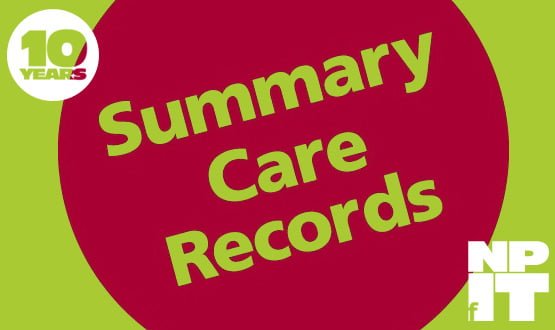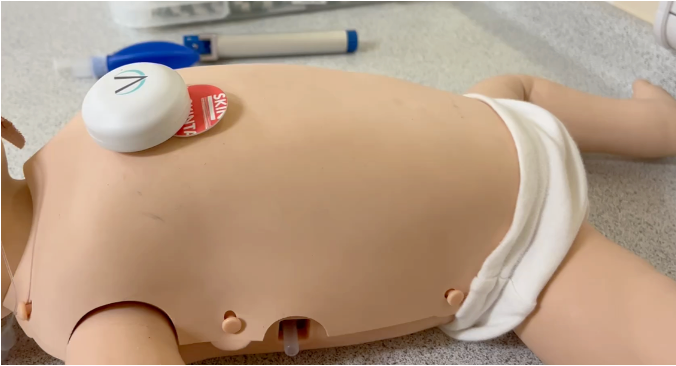In the summary time
- 20 June 2012

‘Delivering 21st Century IT’ promised to build a “life-long health record service” that would give healthcare staff and patients access to “universally available, secure, accurate and up to date health records.”
The National Programme for IT in the NHS, which took forward the strategy, turned this commitment into the NHS Care Records Service.
On the one hand, it set up a national project to create a Summary Care Record – a central record of a patient’s health status that was intended to provide vital information for staff working in out-of-hours and A&E services, and for temporary residents.
On the other, it set up local service provider-led projects to deliver detailed care records systems to trusts and other healthcare organisations; with well-known results.
Targets and rows
As with the other national projects to create e-booking and e-prescription services, NPfIT set a highly ambitious target for the roll out of the SCR. Every patient in England who wanted a record was to have one by the end of 2007.
By the time the first trial – at two GP practices in Bolton – went ahead in March 2007, new guidance was saying that full roll-out should be achieved by the end of 2008. The delay arose, in part, because the programme soon ran into an outcry over confidentiality and consent.
Privacy campaigners argued that the Summary Care Record was an extension of the ‘database state’, and that patients should opt-in to the programme, instead of having to opt-out and having a record created by default if they failed to do so.
Detractors also argued that patients did not fully understand what information was being uploaded, and that they system was wide open to abuse by anybody with an NHS smartcard.
The British Medical Association was concerned that information was not being kept up to date and its General Practitioners Committee called for the roll-out to be suspended until reviews of the content and consent process had taken place.
The review of the record’s content, led by NHS medical director Sir Bruce Keogh, concluded that the core record should only contain a patient’s demographic details, medications, allergies and adverse reactions, and that these should continue to be copied from the GP’s medical record.
A separate review concluded that an opt-out form should be included in patient information packs. Following these reviews, the coalition government gave the green-light for the project to proceed.
London stalling
SCRs can now be created without patient consent, but any move to start uploading the records must be accompanied by an information campaign and patients must be given the ability to opt out. GPs can upload additional information with explicit patient consent.
However, this has not stopped debate. In February 2010, EHI Primary Care reported that NHS London was aiming to create SCRs for everyone living in the capital that wanted one by March 2011.
However, the roll-out was suspended that December after Londonwide Local Medical Committees told GPs to stop creating the records because patients should be opting-in to the programme, not opting-out.
Only 1.1m patients in the capital currently have an SCR, and a spokesperson for Londonwide LMCs told EHI PC its position had not changed. Patients must give their consent before an SCR is created.
Across England, only 1.3% of patients have opted out of the programme and about 14m records have been created.
Progress is being made in some areas, as nearly 40m patients have been sent a letter about the programme and more than 2,100 GP practices have uploaded records to the SCR. The latest target is for all patients to be offered an SCR by the end of next year.
Progress in the North East
NHS North East has 2.6m patients and 1.1m SCRs, with routine viewing of the summaries at five hospitals and one urgent care centre.
The strategic health authority’s assistant chief information officer, Rob Longstaff, says all patients who want an SCR should have one by spring 2013 “in the areas where we’ve conducted public information campaigns.”
He says the SHA works closely with primary care trusts to “raise awareness, enable local debate and tackle issues and misconceptions about the workload and complexity involved in creating and maintaining SCRs.”
And he says: “This strategy has been particularly important to our programme over the last year, as prolonged restrictions on communicating with the public before and immediately after the last general election impacted on the rate of uploads.”
Longstaff also says the area has a number of GP practices that operate non-SCR compliant IT systems and the SHA team is working to “overcome these technical barriers.”
A GPSoC supplier report for November showed that the following systems are SCR compliant: EMIS LV, TPP SystmOne, iSoft Synergy and INPS Vision. Eighty per cent of English practices use these GP systems.
HealthSpace
In 2009, the DH was drawing up plans for ‘Release 2’ of the SCR. This would have involved staff in A&E departments and other NHS organisations entering data including discharge summaries, outpatient clinic letters, and Common Assessment Framework documents.
These plans were put on hold in early 2011, as the consent and confidentiality issues were finally addressed. However, the DH has revealed to EHI PC that it is now recruiting a chair for a new advisory body to look at expanding the record to include hospital data.
If the SCR is to be expanded, though, the vehicle for giving patients access to their summaries is to be axed. HealthSpace was set up as an online health organiser, but in 2007 it was decided that patients with “advanced accounts” should be able to use it to view their SCRs.
Further plans envisaged that HealthSpace would become a hub for transactional services, so patients could book appointments, manage long-term conditions, order repeat prescriptions and contact clinicians online.
Predictions were that millions would use it, but HealthSpace had abysmal uptake amongst patients. In June 2009, EHI PC reported that out of more than 250,000 records created, just 812 people had activated an advanced HealthSpace account and only 437 had accessed their SCR.
In February 2011, just 60 patients a month were using an advanced HealthSpace account to see their record and this fell to just 25 a monthby August.
A review of the SCR conducted by researchers from University College London said the service received £18m in funding for the year to January 2011, from the ‘Darzi stream’ of NHS innovation money. This meant that in January, it was costing £6,000 per advanced account user.
The site’s inevitable demise was confirmed by national clinical director for informatics Dr Charles Gutteridge at a Westminster Forum last month. “It is too difficult to make an account. It is too difficult to log on. It is just too difficult,” he explained.
He told the forum that the DH needed to create a new portal through which patients could view their SCRs. The Health Service Journal recently reported that the NHS Commissioning Board is developing a new website for records access called My Health.
The website will be a “digital multi-channel business development to allow patients to access their own health records and link these to functional transactions, including booking appointments and ordering prescriptions”, the report says.
On GP, Dr Neil Bhatia, who led a campaign against SCRs being created without patient consent, has already said My Health is HealthSpace rebadged, and predicted that it will be a huge waste of money.
Other ways forward
Despite the slow progress of the SCR roll-out, the drive to share relevant patient information among appropriate health professionals is stronger than ever.
This is shown by the development of local shared record schemes in a number of areas including Cumbria and Hampshire.
Dr Paul Cundy, the chairman of the BMA and RCGP’s joint IT committee believes that over the next ten years, the GP record will assume the role of the single electronic record.
“Increasingly people are looking to link up to or add to or extract from the GP record and that’s because it’s so far ahead of anything else that you could develop that it’s the natural place at which to start,” he explains.
“The concept of the GP record becoming the default single electronic record for the patient – that’s fine. We have for the last 60 years acted as the collator of the patient history and that will just bolster our position as the patient guardian.”
Dr Cundy also predicts that over the next decade, there will be a social media effect on health records, starting with lots of “app like applications” and integration of personal communication devices such as mobile phones and iPads into health care.
Emailing GPs, booking appointments and checking results on line will be “taking off in a big way,” he argues.
“Ten years ago when they first told us (GPs) what they were going to do to us (as part of the NPfIT). We were initially worried, then we realised it wasn’t going to happen and it was just a matter of time – of waiting – until it fell apart. And it fell apart.”




